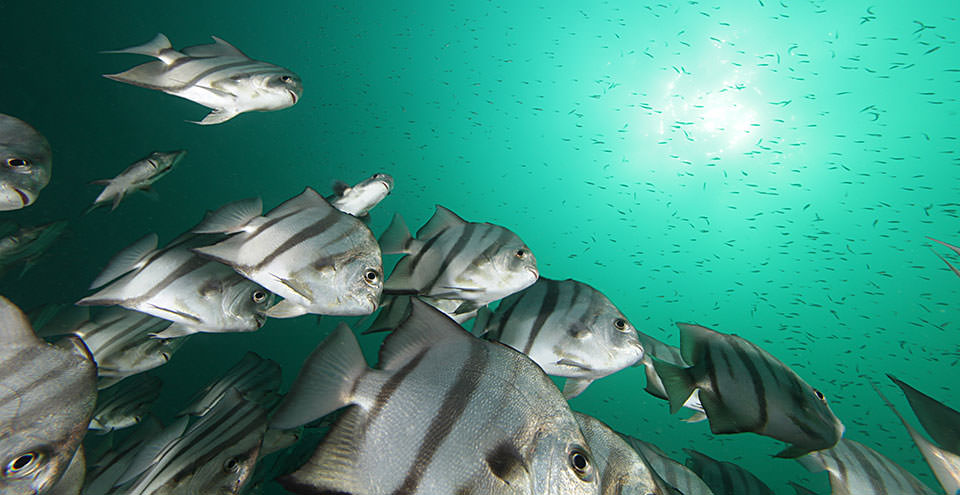What is the Census of Marine Life?
The Census of Marine Life was an international project that recorded the diversity, distribution, and abundance of life in the ocean.

A school of spadefish in Gray's Reef National Marine Sanctuary, located off the coast of Georgia. A search of the OBIS-USA website, a product of the Census of Marine Life, shows over 3,300 records of species found in and near this sanctuary.
The Census of Marine Life was an international project spanning 10 years that recorded the diversity, distribution, and abundance of life in the ocean. More than 2,700 scientists from 80 nations contributed to the Census. The results of their research, which included 540 marine expeditions, were reported at The Royal Society, London, in October 2010.
During the Census, scientists found and formally described more than 1,200 new marine species, with thousands more awaiting formal descriptions; discovered and mapped areas in the ocean where marine species congregate; and documented long-term and widespread declines in marine life as well as species resilience and recovery.
The Census resulted in the International Ocean Biogeographic Information System (iOBIS) database. The U.S. component of this database, Ocean Biogeographic Information System (OBIS)-USA, allows users to search and download biodiversity data from marine waters of the United States. The data and information collected by the Census—30 million records and 2,600 papers contributed to the scientific literature—will serve as a baseline in the coming years, as researchers strive to measure changes to ocean habitats due to sea level rise and climate change, extreme weather events, hazardous spills, and other factors.
As a partner in the Census, NOAA's Office of National Marine Sanctuaries played a leading role on the U.S. National Committee for the Census of Marine Life, published reviews on biodiversity and the OBIS-USA database, and contributed a chapter to the book Biota of the Gulf of Mexico.Data from the sanctuaries were incorporated into the OBIS database, so that biodiversity of these special ocean areas could be documented. The long time-series of data incorporated into the Census has allowed sanctuary researchers to document the historical ecology of marine ecosystems subject to resource exploitation.
NOAA's Coral Reef Conservation Program, National Marine Fisheries Service, Office of Ocean Exploration and Research, and others also contributed to the Census.
Search Our Facts
Get Social
More Information
Did you know?
During the ten-year Census of Marine Life, scientists discovered and mapped areas in the ocean where marine species congregate, including an "evening rush hour" on the Mid-Atlantic Ridge and a school of fish the size of Manhattan off the coast of New Jersey!

Last updated: 06/16/24
Author: NOAA
How to cite this article